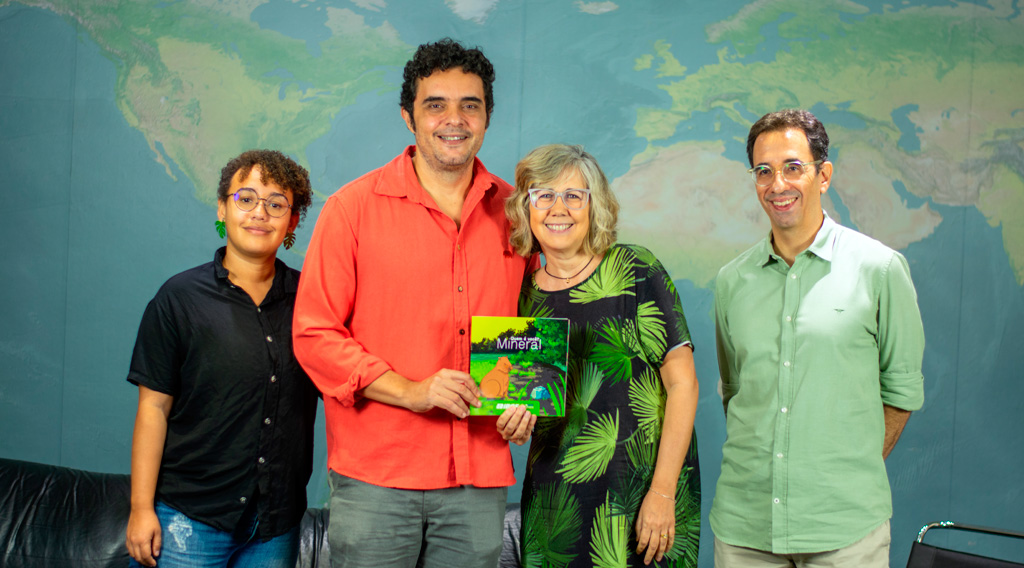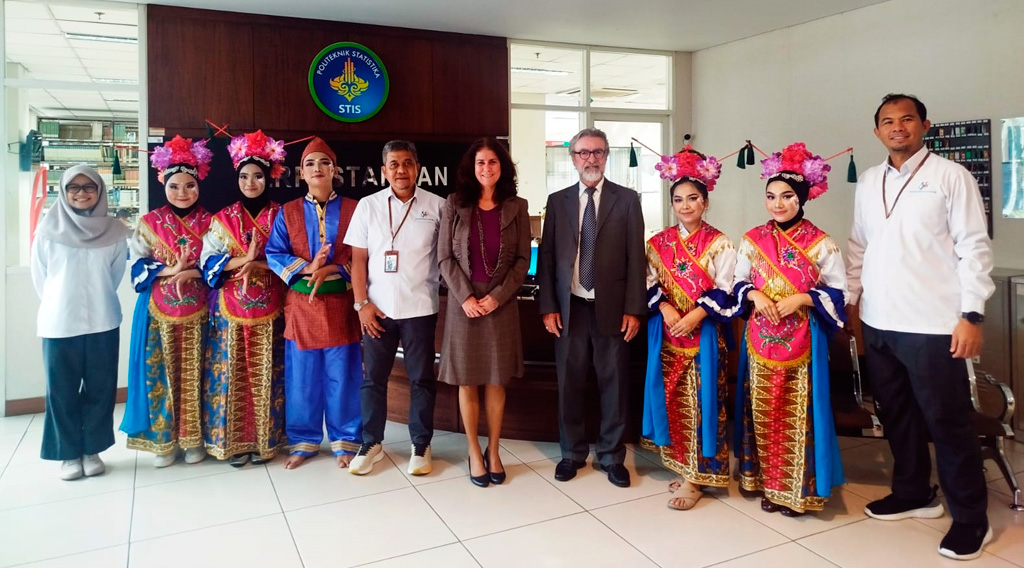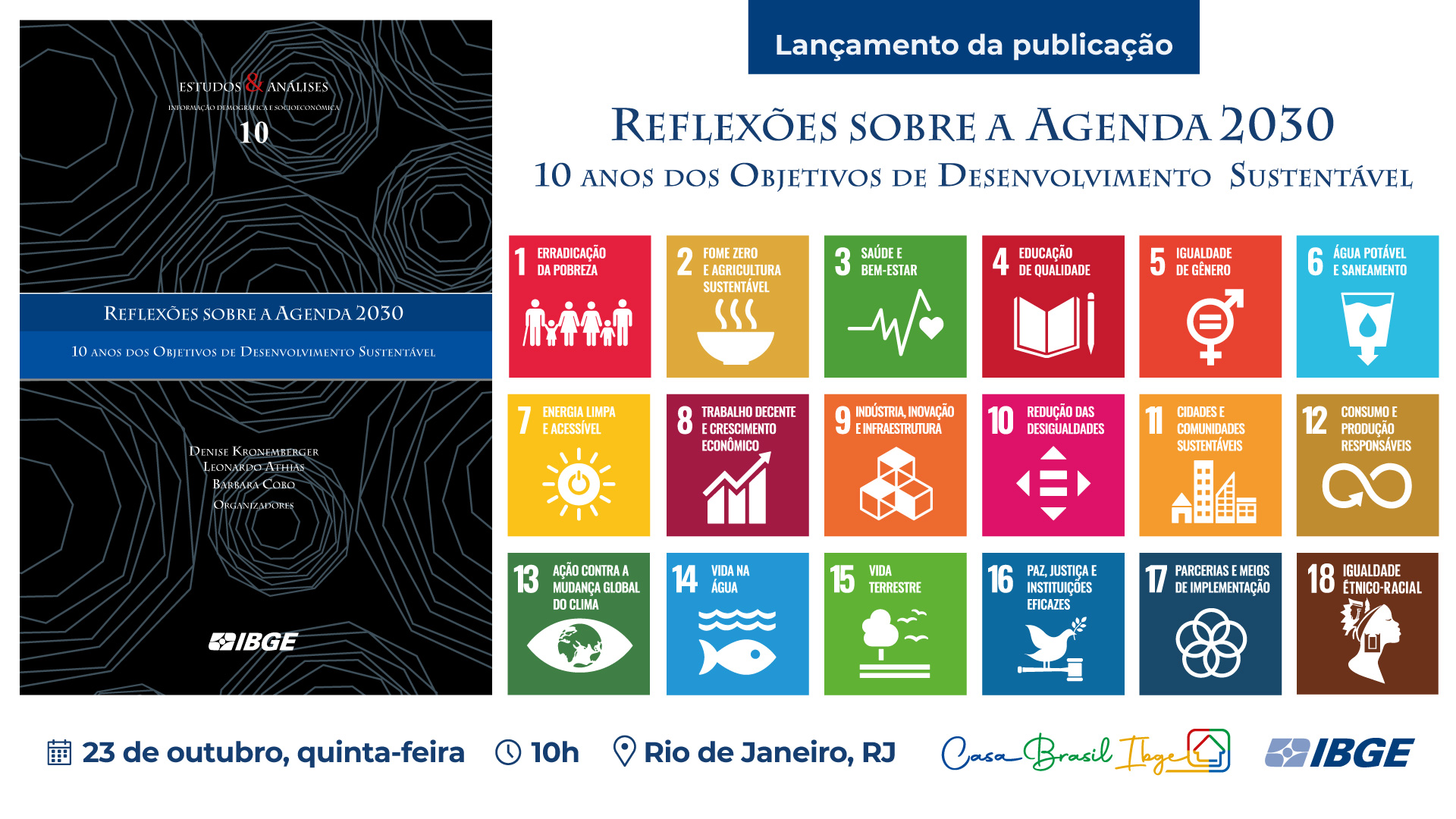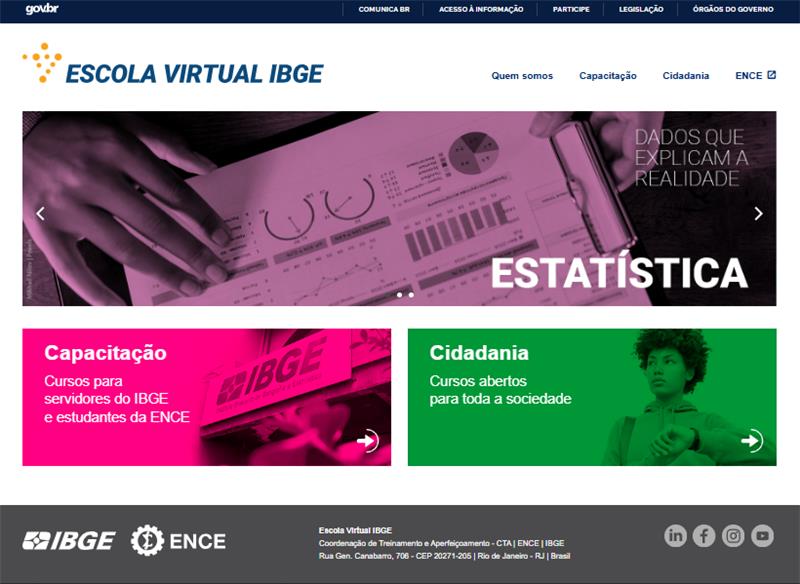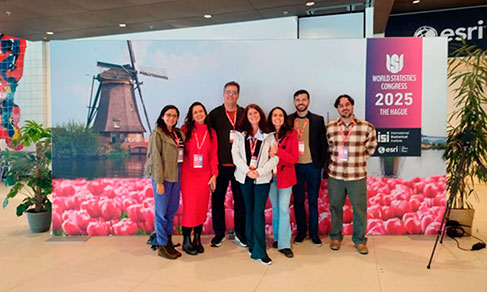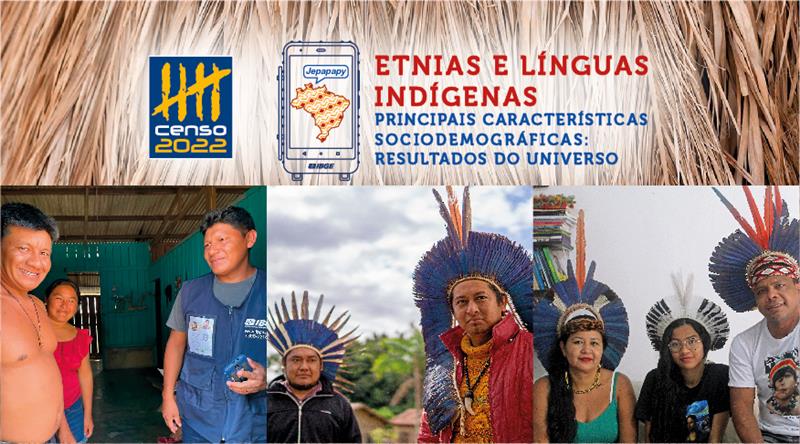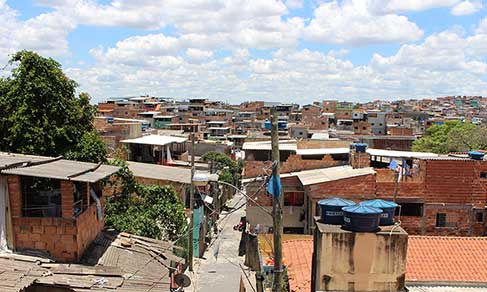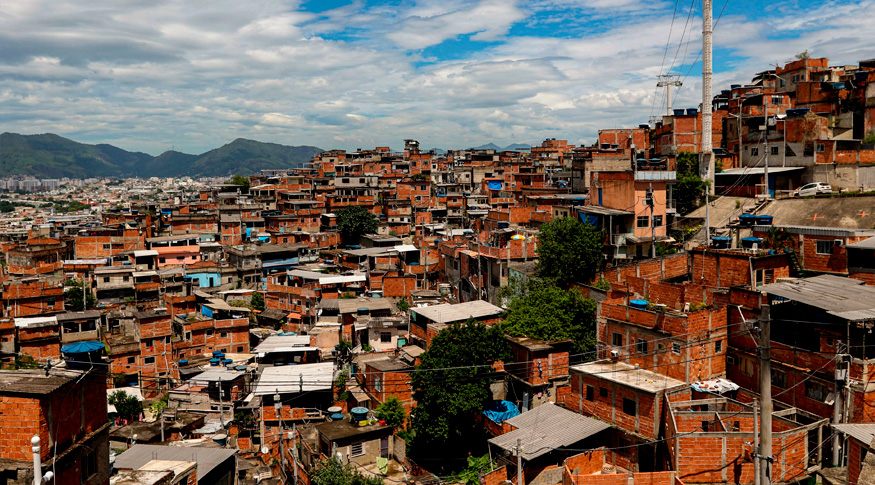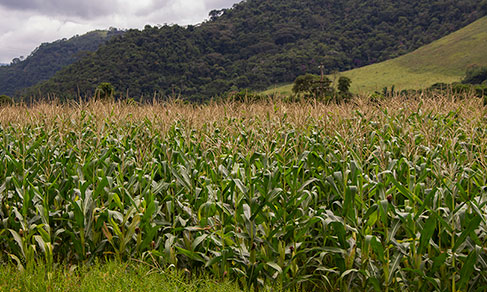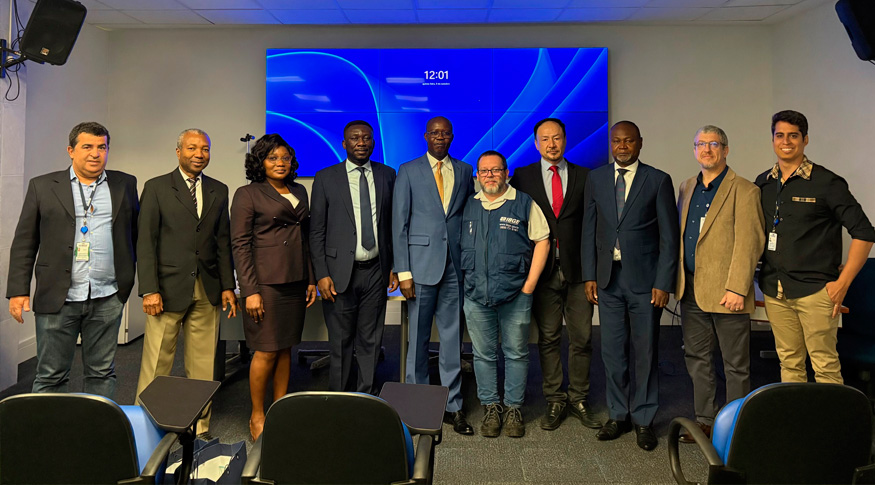2022 Census
2022 Census: In Vitória (ES), IBGE technical team releases household characteristics
December 12, 2024 02h55 PM | Last Updated: December 19, 2024 10h51 AM

The Brazilian Institute of Geography and Statistics (IBGE) released this Thursday, the 12th, data related to the 2022 Population Census: Household Characteristics, Preliminary Sample Results”, at the Jones dos Santos Neves Institute, in Vitória (ES). The event was attended by IBGE officials and was broadcast on Digital IBGE and on the Institute's social media.
The opening session was attended by the Director of Surveys, Elizabeth Hypólito, the Deputy Director of Geosciences, Patrícia Vida, and the General Coordinator of Population Census, Gustavo Junger. The results were presented by the analyst from the IBGE's Department of Social Indicators, Bruno Perez. The opening session was moderated by the General Coordinator of the Center for Information Documentation and Dissemination and of the Coordination of Social Communication (CDDI/CCS), José Daniel Castro.

The closing session was made up by the Secretary of Health and Environmental Surveillance of the Ministry of Health, Ethel Maciel, the director of the Department of Governance and Indicators of the Ministry of Science, Technology and Innovation, Verônica Goulart, the secretary of Management and Planning of Vitória (ES), Regis Mattos, the secretary of Development, Luciano Forrechi, the president of the Jones dos Santos Neves Institute, Pablo Lira and the superintendent of IBGE in Espírito Santo, Max Athayde Fraga.

Representing the Minister of Health, Nísia Trindade, Ethel Maciel congratulated the IBGE for delivering yet another successful result. “The Ministry of Health has had a long-standing partnership with the Institute, conducting several studies. The breakdowns by color or race, for example, provide us with crucial information for the design of public policies. This king of data will be essential for the programs that are implemented and for understanding regional differences and differences in color or race, seeking to make the country fairer and less unequal,” the secretary emphasized.
Verônica Goulart represented the Minister of Science, Technology and Innovation, Luciana Santos, and highlighted the work of the IBGE members in “capturing from North to South, from East to West, portraits of our great country and its diverse people. This is extremely important work, without which it is impossible to think of efficient public policies that seek to correct asymmetries and inequalities to build a fairer country.”
Mr. Forrechi represented the mayor of Vitória (ES), Lorenzo Pazolini, and emphasized the value of this data in the formulation of public policies, highlighting the information related to housing. “What is released by the IBGE helps us not only to see the results of the public policies implemented, but also to help in the planning and improvement of new ones”, highlighted the Secretary of Development.
Next, Regis Mattos highlighted how this information helps in more effective and realistic work by the City Hall. “For the Planning Department to be bold, it must first have a solid foundation, and it is this foundation that the IBGE provides us with”, said the secretary.
On behalf of the president Marcio Pochmann, the superintendent of the Institute, Max Fraga, thanked everyone who contributed with the operation of the Population Census and also those who attended the dissemination event. “This Census was carried out amid many difficulties, with a lot of sacrifice and sweat. For us IBGE members, it is a matter of honor to deliver this service to society and I thank everyone who contributed to this,” highlighted Mr. Fraga.

For Ms. Hypólito, the Census is the most complex statistical operation carried out in our country. “This process is so rich not only because of the number of topics it produces, but also because of the disaggregation that allows us to cross-reference various data,” explained the Director of Surveys. She also congratulated the team that carried out this work, from the planning, development, collection, processing, analysis and dissemination stages. “It is a team that works hard to ensure that we can bring this information to society,” she emphasized.
Patrícia Vida then highlighted the spatial scope of the dissemination, since “it is very important to know more and more where the event occurs and not just when and how it happens. Knowledge helps us understand where the predominance of certain characteristics found during the Census occurs. The increasing integration of statistical information with geospatial information facilitates the work of managers in formulating public policies.”
Mr. Junger, on the other hand, expressed how proud he is of this dissemination event, which includes data from the Population Census sample. “This topic has been investigated since 1940 and records the cultural and social diversity of housing in our country, reflecting profound changes in housing and the expansion of services. This data provides a picture of who we are, but also the starting point for formulating public policies that change reality,” explained the coordinator of the Popultion Census.
Pablo Lira, general director of the Jones dos Santos Neves Institute, highlighted the partnership between the IBGE and the Institute. “Our mission is to produce information and scientific evidence to improve public policies in Espírito Santo and throughout the country,” Mr. Lira emphasized.

Household characteristics
Bruno Perez, an analyst at the IBGE's Social Indicators department, began the presentation by explaining the sample collection process. "The Census has two questionnaires: the basic one and the sample one. The latter collects more information and was administered to approximately 10% of the population. Unlike the last releases, which provided data from the universe, this is the first to address information only in the sample questionnaire."
Mr. Perez then provided information on the characteristics of households, such as the number of people living in rented homes. In 2022, the proportion of Brazilians living in rented homes continued to grow and reached 20.9% of the population. In 2000, this percentage was 12.3% and, in 2010, 16.4%. Even so, there is a considerable predominance of self-owned homes, with 72.7% of the Brazilian population living in homes owned by one of the residents (already paid for, inherited, acquired or still being paid for).
Another point concerns the structural elements of the home. “Approximately 7,000 people, equivalent to 0.004% of the population, lived in housing units without walls. Conceptually, in the Census, housing units must have a walls. However, an exception is made in Indigenous areas, since for some Indigenous Brazilian ethnic groups the housing unit only has a roof. In these cases, the IBGE makes this flexibility of counting a home that does not have a wall”, explained Bruno Perez.
The release also addressed the number of rooms in each housing unit. “There was a significant reduction in housing units with up to three rooms and a reduction, not so significant, in housing units with four rooms. The proportion of housing units with five rooms increased, while those with six or more grew until 2000 and then stabilized, which may be related to the fact that the number of residents per home has decreased, possibly resulting in a lower demand for housing units with more rooms”, highlights the analyst.
For more information, please see the publication released this Friday (12).


